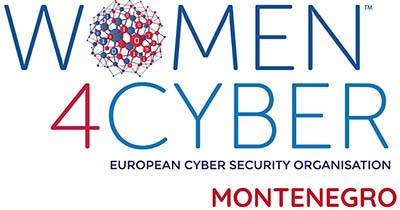Phishing is a type of cyber attack that involves targeted attempts of electronic fraud with the aim of obtaining confidential information from individuals or organizations. Unlike traditional phishing, which is sent to a large number of random addresses, spear phishing attacks are highly personalized and targeted at specific individuals or organizations.
The term “spear phishing” is derived from combining two words: “spear” and “phishing.” This term vividly describes the precise and targeted approach of the attack instead of the broad and random approach used in traditional phishing.
Phishing: The term “phishing” refers to the digital version of fishing, where attackers “cast nets” (in the form of fake emails, messages, or websites) hoping to “catch” unsuspecting users who will disclose their personal information, such as passwords, credit card numbers, and other sensitive data.
Spear: The addition of “spear” emphasizes the targeted nature of this type of attack. Unlike regular phishing, which may target a large number of people in the hope that someone will “bite,” spear phishing is like throwing a spear directly at a specific target. Attackers carefully select their targets and tailor their methods to increase the chances of success, often using information gathered about individuals or organizations to make their fake messages more convincing.
Attackers typically gather information about their targets to create convincing messages that appear to come from trustworthy sources, such as colleagues, friends, or legitimate organizations. These messages may include malicious links or attachments that, when opened, can install malware on the victim’s device or redirect them to fake websites designed to steal usernames, passwords, and other sensitive information.
Phishing campaigns usually target a large number of people in the hope that a small percentage of them will fall for the trick, while spear phishing requires much more preparation and focuses on quality rather than quantity, targeting specific individuals or groups with a high degree of personalization in messages. Both types of attacks can have serious consequences, but due to the more direct and personalized approach, spear phishing often poses a greater immediate threat to individuals and organizations.
Characteristics Phishing Spear Phishing Target Broad audience Specific individuals or organizations Personalization Low; general messages High; messages tailored to individuals Complexity and Preparation Relatively simple; less research More complex; requires detailed target research Attack Method Mass email sending Carefully crafted messages to targeted individuals Message Examples “Your account requires verification.” “Hello [Name], we have noticed suspicious activity on your account.” Success Frequency Lower, due to general approach Higher, due to personalized approach Typical Goal Theft of personal data, passwords, credit information Obtaining specific, sensitive information or network access Prevention User education, spam filters User education, advanced security solutions, identity verification
Spear phishing attacks are sophisticated and targeted, designed to look like legitimate communications from trusted sources. Here are a few examples of how spear phishing attacks might appear:
- Fake Email from the IT Department
You receive an email that appears to come from the IT department of your company. The message claims that urgent updates to your computer system or software are required and contains a link you need to click to perform the update.
When you click on the link, you may be prompted to enter your username and password, allowing attackers to gain access to your corporate account.
- Message from Your Supervisor
You receive an email that looks like it was sent from your supervisor or another high-level executive in the company. The email may request that you urgently transfer sensitive information, such as financial reports or employee data, purportedly for an urgent meeting or decision.
This type of spear phishing attack plays on authority and urgency, attempting to get you to react quickly without much thought, compromising confidential information.
- Fake Message from a Financial Institution
An email that appears to come from your bank or another financial institution claims there is an issue with your account or that additional verification is required. You are asked to click on the provided link and enter your financial information.
The goal is to steal your financial data, including account numbers and passwords, allowing attackers access to your funds.
- False Password Change Request
You receive an email that appears to come from a service you frequently use (e.g., cloud service, social media, email provider) informing you that your password has expired or your account has been compromised. You are asked to click on a link to “reset” your password.
When you click on the link and enter your current password, attackers actually obtain your login credentials.
How to Protect Yourself?
Access Management Policy: Limit access to sensitive systems and information based on employee roles, applying the principle of least privilege. Implement strict procedures for verifying identity when requests for sensitive information or changes in accounting or financial operations are made, especially if requests are received via email.
Regular Employee Training: Conduct regular training sessions for employees on the latest phishing and spear phishing tactics, including how to recognize suspicious emails and messages.
Phishing Attack Simulations: Conduct controlled phishing simulations to test employee awareness and identify areas that require additional training.
Advanced Email Filtering: Use advanced email filters that can detect phishing attempts, including analyzing links and attachments for malware.
Regular Updating and Patch Management: Implement security solutions that use AI and machine learning to identify suspicious activities and malware. Keep all systems, applications, and devices updated with the latest security solutions to reduce vulnerabilities.
Multi-Factor Authentication (MFA): MFA adds an additional layer of security by requiring more than one form of identity proof when logging in, reducing the risk even if attackers obtain usernames and passwords.
Data Encryption and Backups: Encrypt sensitive data to make it unreadable and useless in case attackers manage to steal it. Regularly back up important data and store it in a secure location to minimize damage in the event of a cyber attack.
dr Andreja Mihailović











